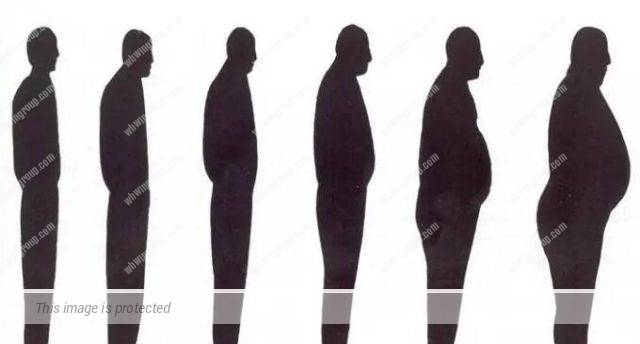What are peptides?
As we all know, Peptides are short-chain amino acids found naturally in the body. Amino acids are the building blocks of protein and these particular amino acids are designed to augment specific functions within the human body.
Therapy with peptides uses those sequences already present to regulate and rejuvenate functions, basically, they bind to and tell other cells what to do, replacing or mimicking the functions of naturally occurring peptides. Peptides have the capability to rewrite body chemistry relationships to promote restoration, anabolism, and homeostasis.
What Are The Different Types Of Peptides?
It is important for everyone, Peptide therapy is the future of regenerative medicine. There are over 60 FDA-approved peptides on the market. Peptides are commonly used in everyday medical therapy such as Lisinopril, which is used for hypertension and insulin, used to control blood sugar and diabetes.
So far as I know, Peptides are used to help increase HGH or human growth hormone production, promoting healing within the body. In addition to that, there are other peptides for gut health, brain health, immune-boosting, sexual dysfunction, erectile dysfunction, and many more. At Limitless Male, we focus on a few key peptides such as Sermorelin, Ipamorelin, CJC 1295, BPC-157, AOD-9604, Semaglutide, PT-141 and so on.
What are HGH peptides?

To begin with, Human growth hormone (HGH), also known as somatotropin, is a 191 amino acid single-chain polypeptide produced by somatotropic cells within the anterior pituitary gland. As its name implies, scientists originally found it to be responsible for growth regulation during childhood. However, research has determined that HGH is also responsible for the regulation of many of the body’s other basal metabolic functions and operates as an acute phase stress reactant.
The effects of HGH peptides
In a word, HGH has two mechanisms of effect: direct action and indirect action. The direct effects of HGH on the body are through its action on binding to target cells to stimulate a response. The indirect effects occur primarily by the action of insulin-like growth factor-1, which hepatocytes primarily secrete in response to elevated HGH binding to surface receptors.
Once activated, the Janus activating tyrosine kinases (JAKs) 1 and 2 will bind to the latent cytoplasmic transcription factors STAT1, STAT3, and STAT5, and be transported into the nucleus inducing increased gene transcription and metabolism to produce insulin-like growth factor-1 for release into the circulation. Insulin-like growth factor-1 then has an impact on the growth and metabolism of peripheral tissues. One can think of the effects of HGH as a combined effect of both HGH and insulin-like growth factor-1.
Growth
HGH induces growth in nearly every tissue and organ in the body.
However, it is most notorious for its growth-promoting effect on cartilage and bone, especially in the adolescent years. Chondrocytes and osteoblasts receive signals to increase replication and thus allow for growth in size via HGH’s activation of the mitogen-activated protein (MAP) kinases designated ERKs (extracellular signal-regulated kinases) 1 and 2 cellular signalling pathways.
Activation of this phosphorylation intracellular signalling cascade results in a cascade of protein activation, which leads to increased gene transcription of the affected cells and ultimately causes increased gene replication and cellular growth.
Insulin-like growth factor-1 binds to its receptor, IGF-1R, on the cellular surface and activates a tyrosine kinase-mediated intracellular signalling pathway that phosphorylates various proteins intracellularly leading to increased metabolism, anabolism, and cellular replication and division.
Furthermore, it acts to inhibit apoptosis of the cell, thus prolonging the lifespan of existing cells. The net result is to encourage the growth of tissue and create a hyperglycemic environment in the body.
Metabolic Effects
HGH impacts metabolism primarily by up-regulating the production of insulin-like growth factor-1 and its subsequent effect on peripheral cells. The intracellular signalling activation that occurs, as stated above, also has a significant impact on the basal metabolic functions of organ tissues.
In general, cells enter an anabolic protein state with increased amino acid uptake, protein synthesis, and decreased catabolism of proteins. Fats are processed and consumed by stimulating triglyceride breakdown and oxidation in adipocytes. Additionally, HGH suppresses the ability of insulin to stimulate the uptake of glucose in peripheral tissues and causes an increased rate of gluconeogenesis in the liver, leading to an overall hyperglycemic state.
Clinical Significance
HGH is extremely important for modulating growth during adolescence. Therefore, the major aberrations in the regulation of HGH may result in growth defects. HGH hypersecretion results in gigantism or acromegaly, whereas HGH deficiency will result in a growth deficit in children and the GH deficiency syndrome in adults.
Acromegaly
Acromegaly typically results from an HGH secreting pituitary adenoma, with an onset after the closure of the epiphyseal growth plates, typically in adulthood.
Therefore, bone growth primarily affects flat bones such as the skull, mandible, sternum, hands, and feet. Often the presenting complaint is of hats or gloves not fitting anymore due to swelling of the hands and head.
Because the illness is due to a pituitary mass, hypopituitarism may also develop with secondary reproductive disorders and visual symptoms.
In addition to bony growth, there is the growth of the myocardium resulting in biventricular concentric hypertrophy and subsequent heart failure in later disease.
Because HGH counteracts the effects of insulin on glucose and lipid metabolism, diabetes mellitus type 2 and hyperlipidemia are strongly associated with this disease. Treatment consists of surgery and radiation therapy targeting the underlying adenoma as well as symptomatic relief of the secondary effects of HGH as above.
Gigantism
This illness is very similar to acromegaly in all aspects, except the underlying pituitary adenoma develops before the closure of long bone epiphysis. Therefore, bone growth occurs in long bones such as the tibia, fibula, femur, humerus, radius, and ulna.
Since epiphyseal closure occurs before adulthood, this is typically an illness with an onset seen in children. The organ and metabolic impacts are similar to acromegaly.
HGH Deficiency
In children, idiopathic HGH deficiency is the most common. In adult-onset, HGH deficiency typically presents as a constellation of hypopituitary deficiencies. The triggering incident is typically a pituitary adenoma, most likely a prolactinoma.
However, other treatments, such as radiation therapy or surgery, might be the cause. Childhood onset is associated with decreased growth of all skeletal structures, leading to dwarfism. Adult-onset HGH deficiency is less easily diagnosed as it has no single identifying feature that is pathognomonic.
Typically adults have decreased skeletal muscle and increased fat mass in visceral tissue as well as decreased bone density and remodelling, which leads to osteoporosis. Dyslipidemia and insulin resistance are prevalent, which lead to secondary cardiovascular dysfunction, depressed mood, increased anxiety, and a lack of energy.
How are Peptides Administered?
Many peptides are administered through subcutaneous injection, some can also be taken orally or topically. The frequency and dosage vary from peptide to peptide.

Are there any side effects of long-term use of HGH?
Long-term use of HGH gel may cause side effects such as skin irritation, redness, and subcutaneous lipoatrophy in patients. HGH is a human growth hormone, responsible for the development of human organs, posture and height. Hormone levels will decline with age. Eating HGH anti-ageing gel is to supplement the body’s hormones. In addition to anti-ageing, it can also strengthen muscles, reduce body fat, prevent heart disease, stroke and lower blood pressure
References:
1.Baltaci AK, Mogulkoc R, Baltaci SB. Review: The role of zinc in the endocrine system. Pak J Pharm Sci. 2019 Jan;32(1):231-239.
2.Vanderkuur JA, Butch ER, Waters SB, Pessin JE, Guan KL, Carter-Su C. Signaling molecules involved in coupling growth hormone receptor to mitogen-activated protein kinase activation. Endocrinology. 1997 Oct;138(10):4301-7.
3.Binder G. Noonan syndrome, the Ras-MAPK signalling pathway and short stature. Horm Res. 2009 Apr;71 Suppl 2:64-70.
4.Al Aboud AM, Zito PM. StatPearls [Internet]. StatPearls Publishing; Treasure Island (FL): Nov 15, 2021. Alopecia.
5.Han Y, Leaman DW, Watling D, Rogers NC, Groner B, Kerr IM, Wood WI, Stark GR. Participation of JAK and STAT proteins in growth hormone-induced signalling. J Biol Chem. 1996 Mar 08;271(10):5947-52.
6.Ayuk J, Sheppard MC. Growth hormone and its disorders. Postgrad Med J. 2006 Jan;82(963):24-30.


